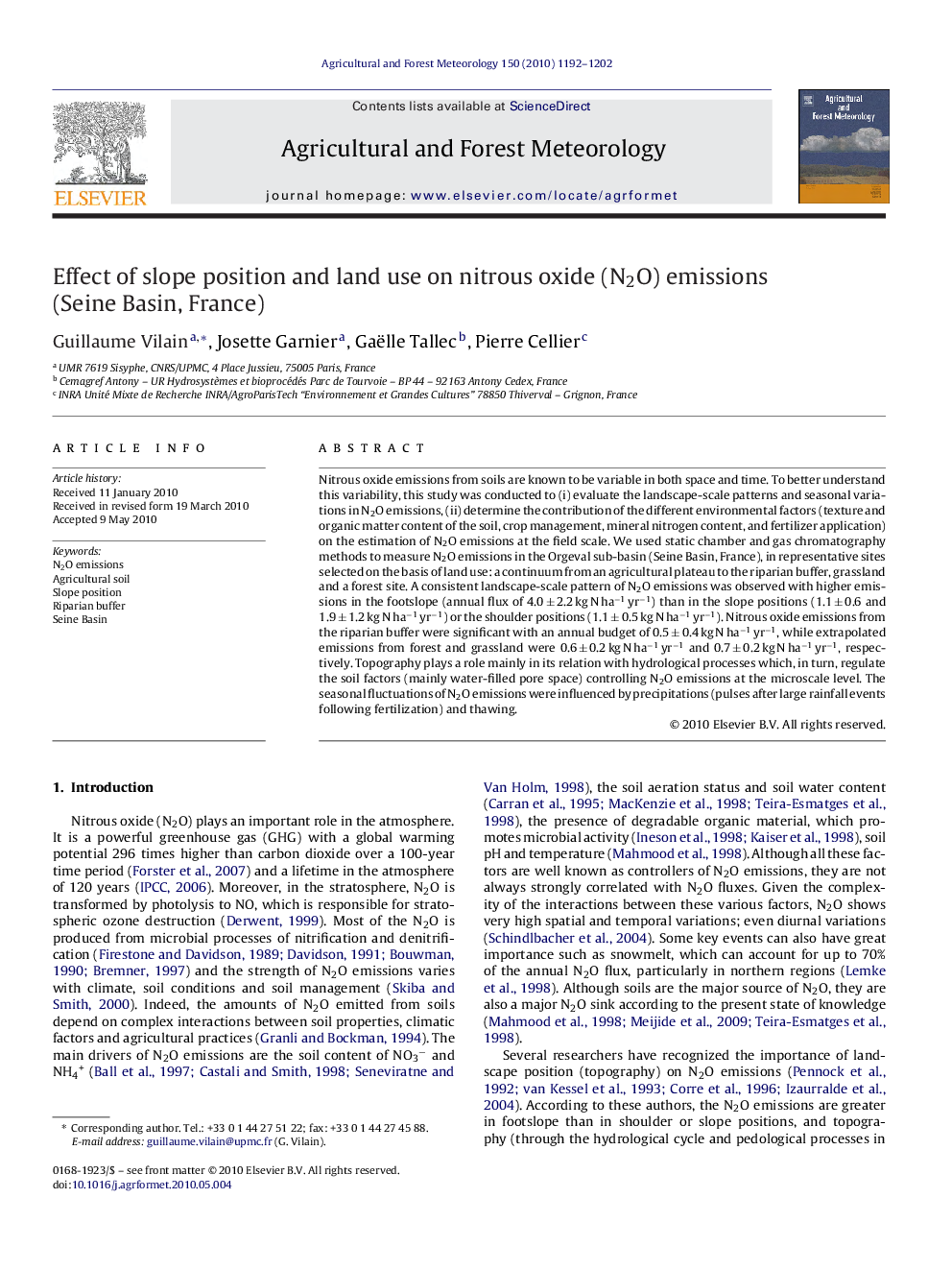| Article ID | Journal | Published Year | Pages | File Type |
|---|---|---|---|---|
| 82222 | Agricultural and Forest Meteorology | 2010 | 11 Pages |
Nitrous oxide emissions from soils are known to be variable in both space and time. To better understand this variability, this study was conducted to (i) evaluate the landscape-scale patterns and seasonal variations in N2O emissions, (ii) determine the contribution of the different environmental factors (texture and organic matter content of the soil, crop management, mineral nitrogen content, and fertilizer application) on the estimation of N2O emissions at the field scale. We used static chamber and gas chromatography methods to measure N2O emissions in the Orgeval sub-basin (Seine Basin, France), in representative sites selected on the basis of land use: a continuum from an agricultural plateau to the riparian buffer, grassland and a forest site. A consistent landscape-scale pattern of N2O emissions was observed with higher emissions in the footslope (annual flux of 4.0 ± 2.2 kg N ha−1 yr−1) than in the slope positions (1.1 ± 0.6 and 1.9 ± 1.2 kg N ha−1 yr−1) or the shoulder positions (1.1 ± 0.5 kg N ha−1 yr−1). Nitrous oxide emissions from the riparian buffer were significant with an annual budget of 0.5 ± 0.4 kg N ha−1 yr−1, while extrapolated emissions from forest and grassland were 0.6 ± 0.2 kg N ha−1 yr−1 and 0.7 ± 0.2 kg N ha−1 yr−1, respectively. Topography plays a role mainly in its relation with hydrological processes which, in turn, regulate the soil factors (mainly water-filled pore space) controlling N2O emissions at the microscale level. The seasonal fluctuations of N2O emissions were influenced by precipitations (pulses after large rainfall events following fertilization) and thawing.
